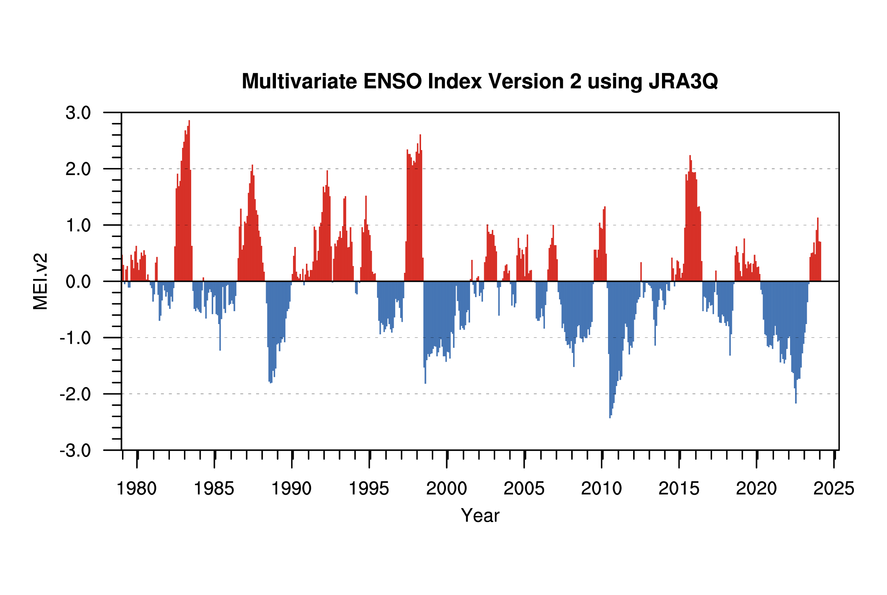Sunsettommy
Diamond Member
- Mar 19, 2018
- 14,894
- 12,528
- 2,400
Global Warming
 Latest Global Temp. Anomaly (December '19: +0.56°C)
Latest Global Temp. Anomaly (December '19: +0.56°C)
Weak El Nino Conditions Help Explain Recent Global Warmth
January 13th, 2020 by Roy W. Spencer, Ph. D.
Excerpt:
The continuing global-average warmth over the last year has caused a few people to ask for my opinion regarding potential explanations. So, I updated the 1D energy budget model I described a couple years ago here with the most recent Multivariate ENSO Index (MEIv2) data. The model is initialized in the year 1765, has two ocean layers, and is forced with the RCP6 radiative forcing scenario and the history of El Nino and La Nina activity since the late 1800s.
The result shows that the global-average (60N-60S) ocean sea surface temperature (SST) data in recent months are well explained as a reflection of continuing weak El Nino conditions, on top of a long-term warming trend.
LINK
========================
Ocean and Sun is what drives weather and climate changes.
The evidence is clear, current El-Nino is what drives the current warming, CO2 has NOTHING to do with it!
The last time we had a moderate La Nina was nearly 10 years ago, it has been neutral to El-Nino nearly 90% of the time since.
LINK
 Latest Global Temp. Anomaly (December '19: +0.56°C)
Latest Global Temp. Anomaly (December '19: +0.56°C)Weak El Nino Conditions Help Explain Recent Global Warmth
January 13th, 2020 by Roy W. Spencer, Ph. D.
Excerpt:
The continuing global-average warmth over the last year has caused a few people to ask for my opinion regarding potential explanations. So, I updated the 1D energy budget model I described a couple years ago here with the most recent Multivariate ENSO Index (MEIv2) data. The model is initialized in the year 1765, has two ocean layers, and is forced with the RCP6 radiative forcing scenario and the history of El Nino and La Nina activity since the late 1800s.
The result shows that the global-average (60N-60S) ocean sea surface temperature (SST) data in recent months are well explained as a reflection of continuing weak El Nino conditions, on top of a long-term warming trend.
LINK
========================
Ocean and Sun is what drives weather and climate changes.
The evidence is clear, current El-Nino is what drives the current warming, CO2 has NOTHING to do with it!
The last time we had a moderate La Nina was nearly 10 years ago, it has been neutral to El-Nino nearly 90% of the time since.
LINK

